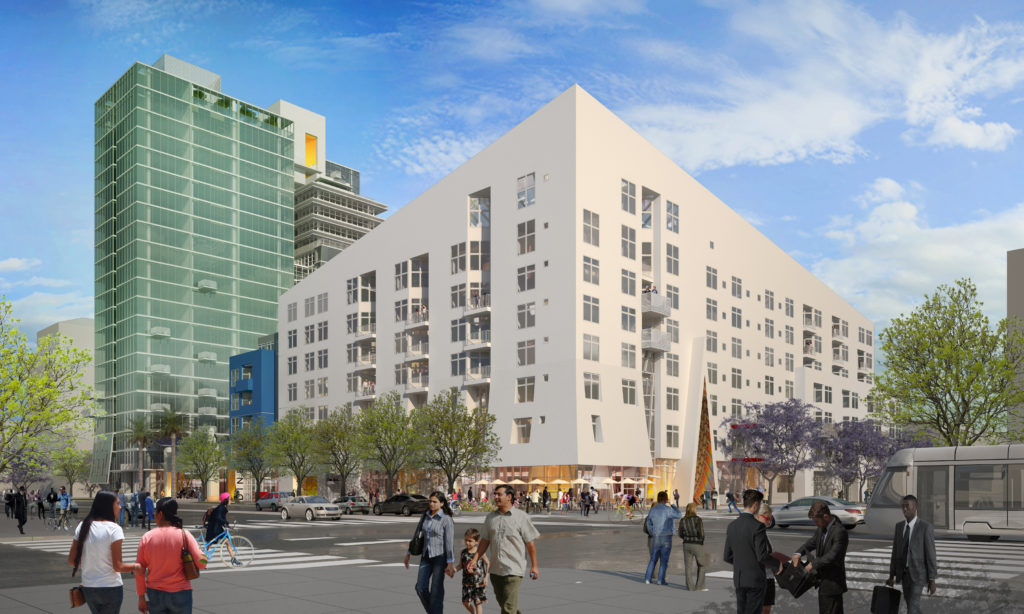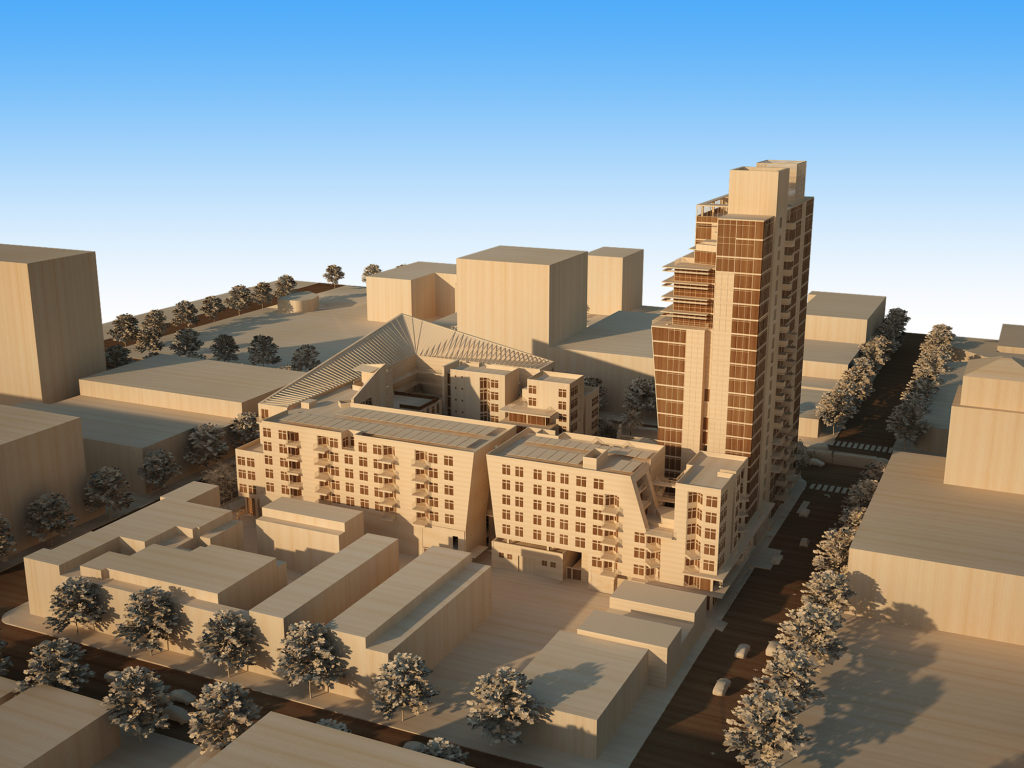The $215 million Onni Group development of the Broadway Block brings together 400 residential apartments with creative offices, artist galleries, restaurants, food and retail uses, a performing arts venue for Cal State University Long Beach, and the adaptive reuse of the historic Acres of Books Building in Downtown Long Beach, California.

The Project Scope
Edge Consultants were engaged to provide energy modelling services to demonstrate compliance with California’s energy code, the Building Energy Efficiency Standards – Title 24.
What is Title 24?
The Building Energy Efficiency Standards – Title 24, commonly referred to as Title 24, is an energy code implemented to design energy efficient buildings while maintaining outdoor and indoor environmental quality. The code is applicable to all new buildings, additions, and alterations to residential and non-residential buildings in the State of California.
Similar to leading energy codes such as ASHRAE 90.1, Title 24 provides prescriptive and performance pathways to demonstrate compliance to the standard. While a prescriptive pathway offers a tick-the-box approach to compliance, a performance approach enables the designer to trade-off on building systems and prioritise those that are important to project stakeholders. A performance approach requires energy modeling of the building design.
Unlike other energy codes, the energy budget in the performance pathway is determined by Time Dependent Evaluation (TDV). This unique “currency” considers the type of energy (electricity, gas, or propane), and period of peak demand. The metric awards building design that reduces operational greenhouse gas emissions compared to the baseline design and shifts peak demand to when electricity grid supply exceeds building energy demand.
Mechanical System
The residential suites in the development is served by individual two-pipe water source heat pumps (WSHP) fed from an ambient loop equipped with closed circuit cooling towers and high efficiency gas-fired condensing boilers. This is a two-stage heating design which tackles the issue of distribution loss. You still have a plant room, but it operates at a much lower temperature (15-30 degrees instead of 60-90). The lower flow rate means less distribution loss (less than 5%) between the plant and the dwelling. A small heat pump sits in each residential unit which tops the heat up to a usable temperature.
Ambient Loops include cooling too, as it is possible to remove excess heat from one dwelling and send this energy back into the loop to provide heat or hot water elsewhere.

Design Team
Onni Group – Client
IBI Group – Architect
Reinbold Engineering Group – Mechanical & Electrical
BC Building Science – Building Envelope
Edge Consultants – Energy Modeling
